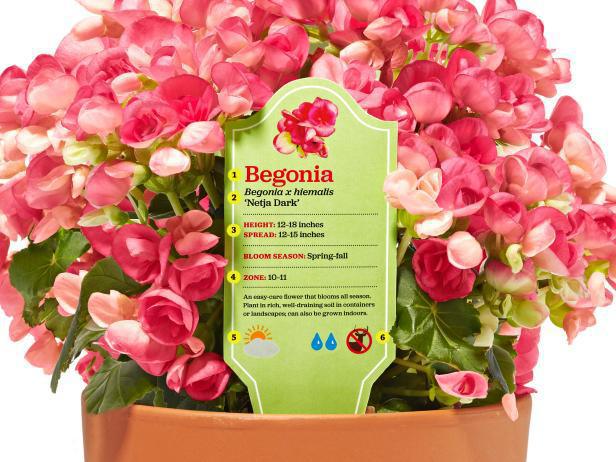1. Common Name
This is what the plant is generally called. If you want a certain color or shape, you’ll need more specifics.
2. Scientific Name
Every plant has a scientific name. The first part is Latin and usually italicized on the tag. It describes the genus, or group, the plant belongs to and its species. The scientific name also includes the cultivar, which is in single quote marks and classifies the plant even further in terms of color and leaf and petal shape.
3. Mature Height and Spread
This is the maximum height and width the plant is likely to reach when fully grown. Our landscape design specialists can help with placement.
4. Hardiness Zone
These numbers let you know the region a plant grows best in. Zones are established by the U.S. Department of Agriculture based on temperatures. You can still grow plants that aren’t in your hardiness zone, but you’ll have to treat them as annuals. To find your zone, go to CLICK HERE.
5. Sun Exposure
You’ll see this info written out or as an icon. When a tag indicates a plant needs full sun, it should get at least six hours of direct sunlight per day. Partial sun/shade, shown here, means it needs about half that amount. If a tag says a plant needs full shade, it should get less than three hours of sun per day.
6. Water Needs and Animal Resistance
If a tag doesn’t say how often to water the plant, look for the number of raindrops. One means you should let soil dry out between waterings. Two means soil should be dry an inch below the surface. Three means you should keep soil moist constantly. An icon with a crossed-out rabbit or deer, like this one, means that animal won’t nibble the plant.



